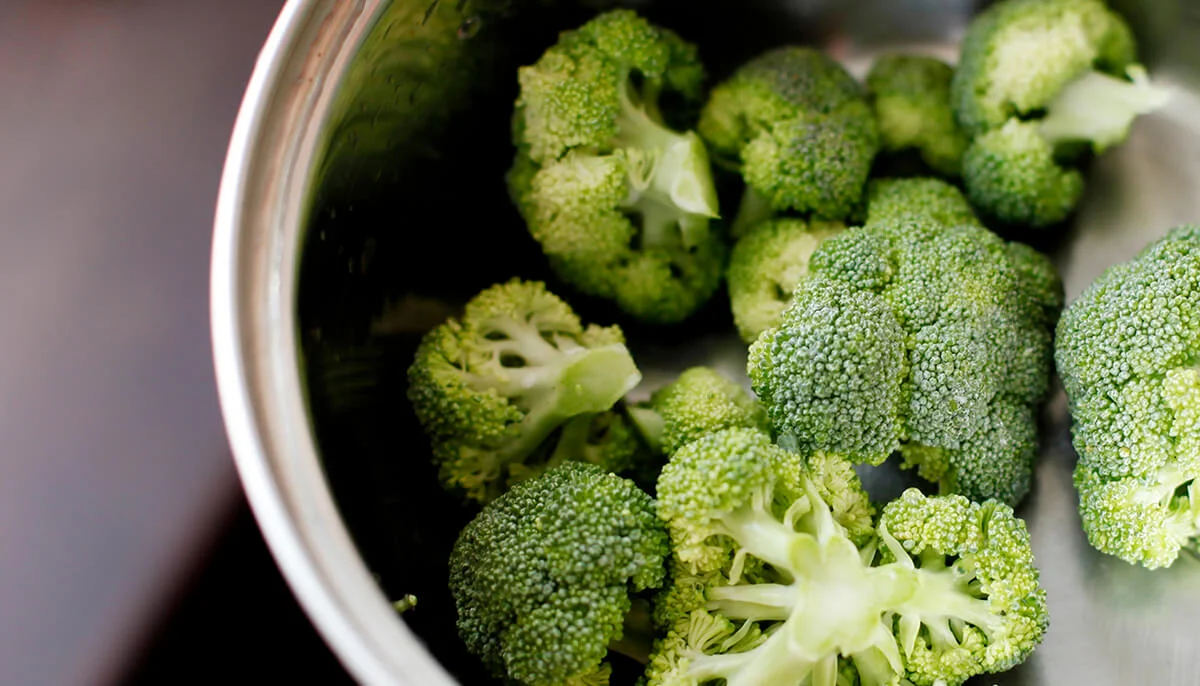Broccoli salad, a flavorful ensemble of fresh, crunchy broccoli florets, complemented by vibrant cherry tomatoes, zesty red onions, and a tangy dressing, is a nutritional powerhouse. This delightful medley not only satisfies the palate but also offers a burst of vitamins, minerals, and antioxidants. Perfect for health-conscious individuals, this broccoli salad elevates any dish with its rich textures and wholesome goodness.
Which Nutrients Do Vegetables Provide?
Vegetables pack a punch when it comes to nutritional content, offering a spectrum of essential nutrients vital for optimal health. Here’s a glimpse into the powerhouse of nutrients they deliver:
- Vitamin A: Essential for vision, immune function, and skin health.
- Vitamin C: Known for its immune-boosting properties and aiding in collagen production.
- Fiber: Crucial for digestive health, lowering cholesterol, and controlling blood sugar levels.
- Potassium: Supports heart health and helps maintain healthy blood pressure.
- Folate: Essential for cell division and crucial during pregnancy for fetal development.
- Iron: Vital for carrying oxygen throughout the body.
- Calcium: Not just found in dairy—some vegetables offer a calcium boost for bone health.
Which Vegetables Are the Healthiest?
1. Broccoli
- Rich in Vitamin K: Aids in blood clotting and bone health.
- High in Antioxidants: Protects against cell damage and certain cancers.
- Fiber-Rich: Aids in digestion and supports a healthy gut.
- Versatile: Can be enjoyed raw, steamed, or stir-fried.
2. Kale
- Superfood Status: Loaded with vitamins A, C, and K.
- Antioxidant Powerhouse: Shields against inflammation and oxidative stress.
- Iron Booster: Aids in oxygen transportation in the body.
- Rich in Calcium: Surprisingly high calcium content for bone health.
3. Spinach
- Abundant Iron Source: Vital for red blood cell production.
- Vitamin-Rich: Contains vitamins A, C, and K, benefiting multiple bodily functions.
- Versatile Use: Great in salads, smoothies, or cooked dishes.
4. Carrots
- Beta-carotene: Converts to Vitamin A, promoting healthy vision.
- Fiber-Rich: Supports digestive health and aids in weight management.
- Potassium: Contributes to maintaining healthy blood pressure.
5. Bell Peppers
- Vitamin C: Supports immune function and collagen production.
- Antioxidants: Guards against cellular damage.
- Low-Calorie Option: Ideal for weight management.
6. Beets
- Rich in Nitrates: Benefits cardiovascular health.
- Folate: Crucial during pregnancy and for cell health.
- Fiber Content: Supports digestive health.
How Does Nutritional Value Change Between Different Forms of Vegetables?
Fresh Vegetables:
Fresh vegetables retain optimal nutritional value, offering a rich concentration of vitamins, minerals, and antioxidants. They’re best consumed shortly after purchase to maximize their benefits.
Frozen Vegetables:
Surprisingly, frozen vegetables can retain a considerable amount of nutrients. Flash-freezing helps preserve their nutritional value, making them a convenient and nutritious option.
Boiled Vegetables:
Boiling vegetables can cause some nutrient loss, particularly water-soluble vitamins like vitamin C and folate. However, the water used for boiling can also contain some nutrients, so incorporating it into soups or sauces can be beneficial.
Steamed Vegetables:
Steaming vegetables preserve more nutrients compared to boiling, as they are cooked with minimal water contact. This method helps retain their color, texture, and nutritional content.
Fermented Vegetables:
Fermentation enhances the nutritional value of certain vegetables. It boosts probiotics, aiding in gut health and improving nutrient absorption.
Broccoli Salad: Nutritional Benefits and Recipe
Broccoli salads offer a delightful way to relish this superfood. Combined with other nutrient-rich ingredients, they provide a wholesome meal while retaining broccoli’s nutritional benefits. A simple recipe includes fresh broccoli florets, cherry tomatoes, red onion, and a tangy dressing of olive oil, lemon juice, and herbs. Experimenting with nuts or seeds can add a crunchy twist, elevating both taste and nutrition.
Vegetables, particularly broccoli, serve as a testament to nature’s bounty, offering an array of health benefits. Incorporating these powerhouses into daily meals can pave the way for a healthier lifestyle.
Conclusion
The diverse array of nutrients and health benefits found in vegetables, especially those highlighted like broccoli, kale, spinach, carrots, bell peppers, and beets, makes them essential for a balanced diet. The varied cooking methods and recipes offer versatile options to enjoy these nutritional powerhouses.
FAQs
- Are raw vegetables better than cooked ones in terms of nutrition?
- While cooking can alter nutrient content, both raw and cooked vegetables have their advantages. Raw veggies may retain more water-soluble vitamins, while cooking can enhance the bioavailability of certain nutrients.
- While cooking can alter nutrient content, both raw and cooked vegetables have their advantages. Raw veggies may retain more water-soluble vitamins, while cooking can enhance the bioavailability of certain nutrients.
- Can I consume these vegetables if I have dietary restrictions?
- Yes, most of these vegetables are versatile and can be included in various dietary plans. However, specific restrictions may apply, so it’s best to consult a healthcare professional.
- Yes, most of these vegetables are versatile and can be included in various dietary plans. However, specific restrictions may apply, so it’s best to consult a healthcare professional.
- How can I make sure I get the most nutrients from vegetables?
- Opt for a diverse selection of colorful vegetables, and try different preparation methods. Avoid overcooking to retain maximum nutrients.
- Opt for a diverse selection of colorful vegetables, and try different preparation methods. Avoid overcooking to retain maximum nutrients.
- Are organic vegetables healthier than conventionally grown ones?
- Organic vegetables may have fewer pesticide residues, but both organic and conventional vegetables can be part of a healthy diet.
- Organic vegetables may have fewer pesticide residues, but both organic and conventional vegetables can be part of a healthy diet.
- Can I replace vegetables with supplements for the same benefits?
- While supplements can be useful, whole vegetables offer a myriad of nutrients, fiber, and phytochemicals that supplements might not replicate entirely.





